[ad_1]
Watch a video of the EarthSky’s stargazing tips for beginning astronomers.
Our top 10 stargazing tips for beginners
Stargazing is for everybody. It’s for people who view the night sky with a sense of wonder … and people who just like being outside at night. Maybe that’s you. If so – and if you’re a beginner – here are some tips to help you get started. And remember like anything, stargazing takes practice. And soon you’ll be able to point out stars, constellations and planets.

Tip 1: Watch the moon
Earth’s companion moon is visible from city streets, suburban decks and wide-open rural pastures. The moon connects you to everybody on the planet, because, generally speaking, we all see the moon at the same phase (although, because we live on a round Earth with 24 time zones, not exactly at the same time). The moon’s orbit around Earth is regular and predictable. So the moon waxes and wanes in our sky in a way that’s about as satisfyingly regular and predictable as anything on Earth can be.
Try following it for one lunar cycle. Start looking for a crescent moon in the sunset direction a day or two after new moon and then check it out every night at about the same time. What do you notice? Is it getting fatter or thinner in phase? Does it move from night to night with respect to nearby bright stars or planets?
Then what happens after the full moon? You’ll notice it rises later each day and soon it’ll be visible only after midnight. And eventually it’ll appear above the horizon closer to the sunrise. That’s because during one complete lunar cycle, the moon spends half of its time in the night sky and half of the time in the daytime. So yes, you can sometimes see the moon in daylight. Track it for a month and see how it changes. To learn more, check out our article on 4 keys to understanding moon phases.
And remember, the moon can help you locate stars and planets. Check our visible planet and night guide to sky to see what’s currently visible in the night sky.
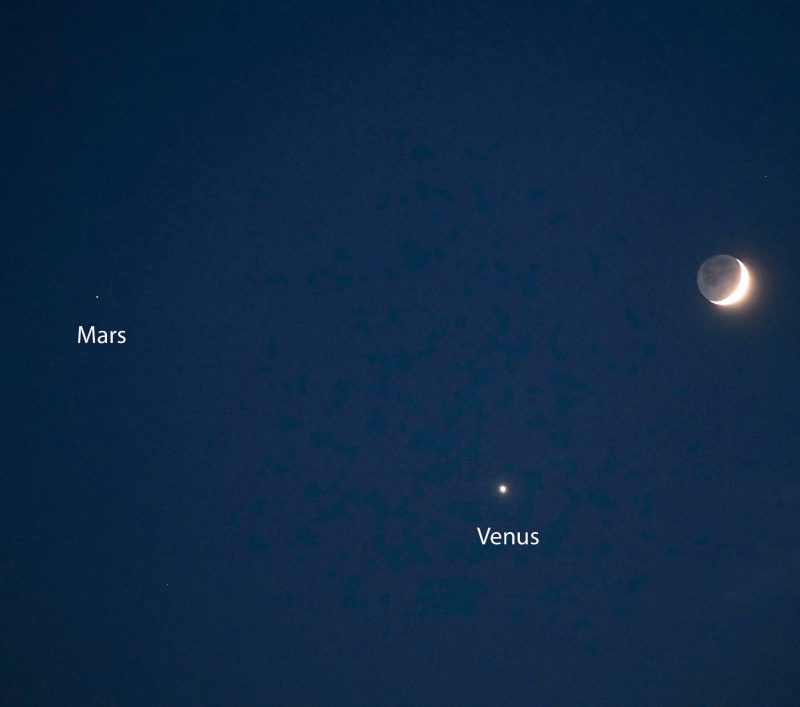
Tip 2: Watch the sun
Don’t look directly at it, of course. But do notice the point on the horizon where the sun rises or sets as seen from your kitchen window, balcony or yard. Does that rising or setting point change as the seasons pass? Does the path of the sun from east to west during the day change?
The sun rises due east and sets due west at every equinox. If you identify east and west, you’ll have a jump on our next activity. By the way, try this great custom calendar at Sunrise Sunset Calendars. Don’t forget to check the moon phase box, too!

Tip 3: Use a chart
The Internet is great, but a computer is an unwieldy companion on stargazing adventures. What you want is a printed chart. Start with the easy-to-use charts at EarthSky Tonight. These daily charts are geared toward beginners, and each one presents something interesting to spot in that night’s sky. Then take the plunge and purchase a printed chart, maybe one of the planispheres in our store.
In just a few weeks of using our daily EarthSky Tonight area – plus a planisphere – you will quickly raise your stargazing IQ. Still want an online chart? Try Stellarium.
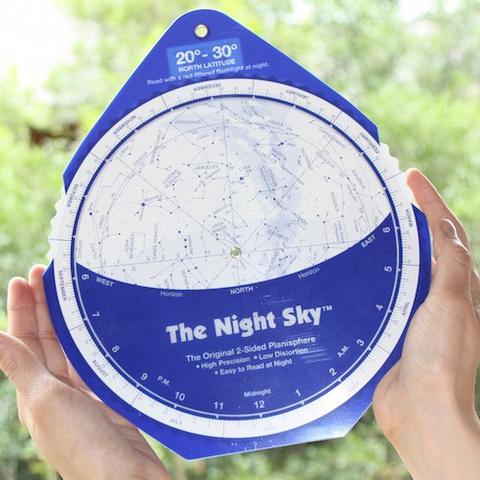
Tip 4: Don’t buy a telescope yet
Remember that pair of binoculars you stuck way at the top of your closet? Point them at the moon and bright objects in the night sky. Do you see anything you hadn’t noticed before? Point them at noticeable star patterns; for example, the second star from the end of the Big Dipper’s handle is really two stars.
If you’re in a dark location, use your binoculars to sweep along the Milky Way and to check out any hazy patches in the night sky. These patches may be actual named star clusters, or they may be clouds of gas and dust where new stars are forming. You don’t need to know what you’re seeing to enjoy the beauty of it all.

Tip 5: Notice patterns among the stars
Here’s how most stargazers learn constellations. They find a noticeable pattern, and then they notice another pattern nearby. They build outward, going from stars and patterns they know to new ones. Notice triangles, curves and straight lines of stars. Some of these patterns are the same ones our ancestors noticed while sitting around a campfire telling stories. Some of their stories ended up being passed down to us. Make up your own stories!

Tip 6: Find a dark-sky site
Try a state park or a national park. You won’t be sorry. Visit EarthSky’s Best Places to Stargaze page for dark locations around the world. Check also for an astronomy club in your area. Experienced members are good sources of advice, and some groups loan out telescopes. Many societies also have libraries stocked with specialized books and atlases often not found in public libraries. Astronomy is also a good hobby to enjoy with a friend or family member. The delight of discovery is infectious.
And leave electronics in your pocket or vehicle. Even night mode is too bright under a dark sky and will ruin your night vision. Use a red flashlight to read your star charts or planisphere.
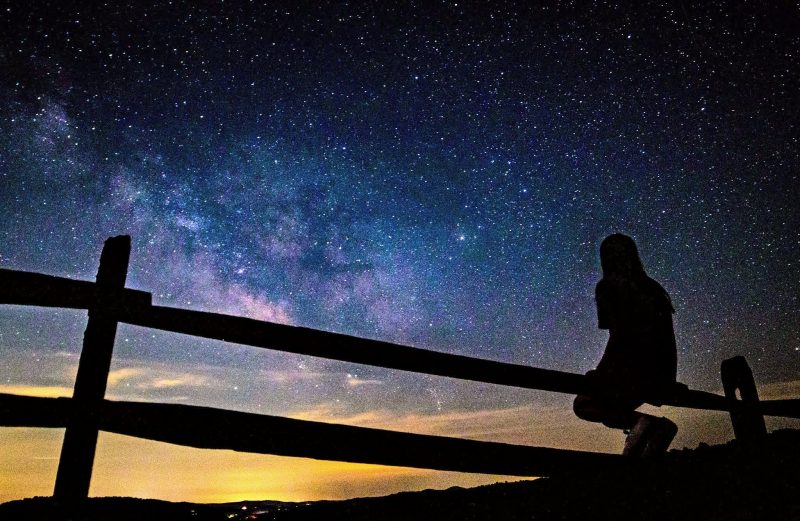
Tip 7: Link up with astro-friends
If you live in a college town, keep an eye out for astronomy community enrichment courses. Local schools, museums and planetariums might also host public programs.

Tip 8: Take the telescope plunge carefully
Have you been watching the night sky for half a year at least? Can you recognize some major constellations? Have you identified a planet or two? The time to buy a telescope is when you’ve given yourself time to acclimate to the sky around you and all its nuances. Before that, if you want more optical power, buy binoculars. Once you’re ready to take the plunge, check these things to know before buying a telescope from High Point Scientific.
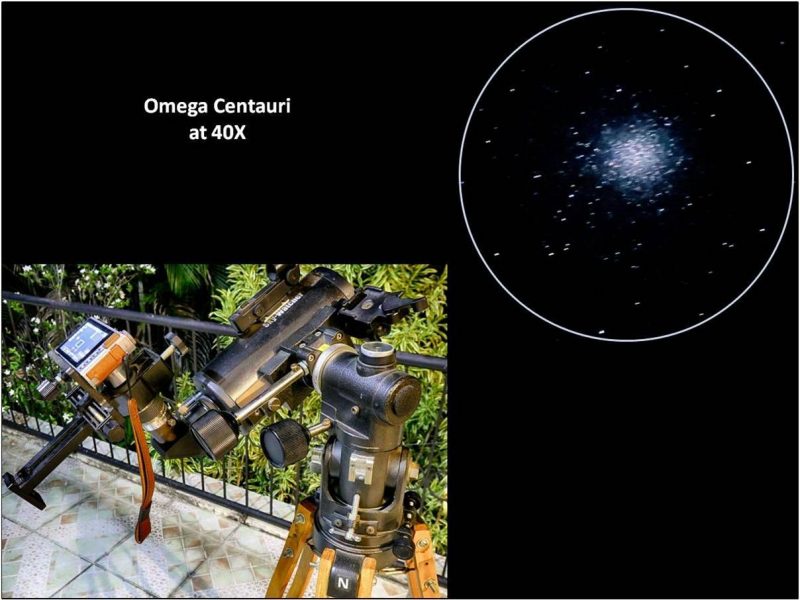
Tip 9: Just look up
Most of us go through life looking straight ahead. But you’ve got to look up to see stars. Standing outside at a bus stop? Look at the sky. In your car? Look out the window, carefully. Going outside before sunup to grab the paper? Gaze toward the sunrise horizon. Notice bright objects in the sky. Notice patterns among the stars. Just start looking up and noticing.

Tip 10: Be faithful to the sky
One of the great things about becoming a stargazer is that you make a lifelong friend: the sky itself. It’s a friend that lives right next door. And like any friend, the sky changes in subtle ways from day to day and year to year. So, once you start watching it, be patient. You can’t learn everything about your friend at once. Be persistent. Watch the sky a lot and watch regularly. You’ll learn by looking! And you’ll make a connection with nature that’ll last your whole life long.
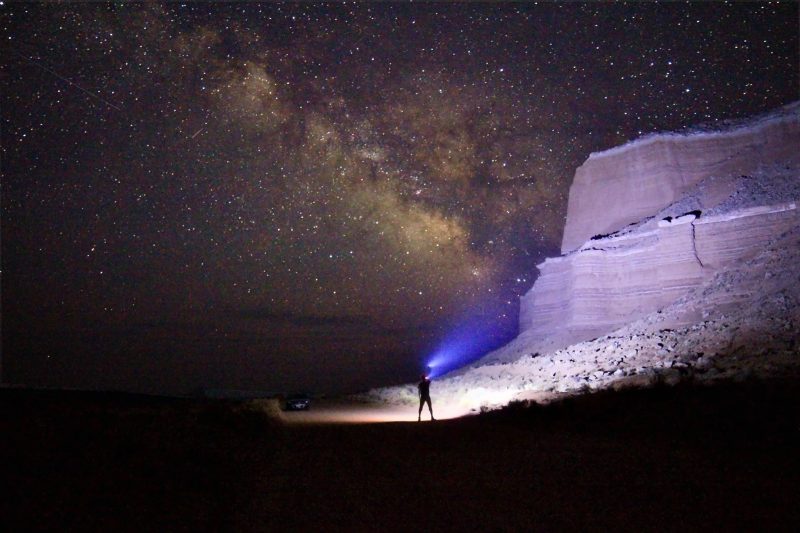
Bottom line: If you’re new to observing the night sky, check out our top 10 stargazing tips for beginners. We’ll help you explore and expand your love for astronomy.
Ready to begin exploring the night sky? Check out our Astronomy kit for beginners.
[ad_2]
Source link

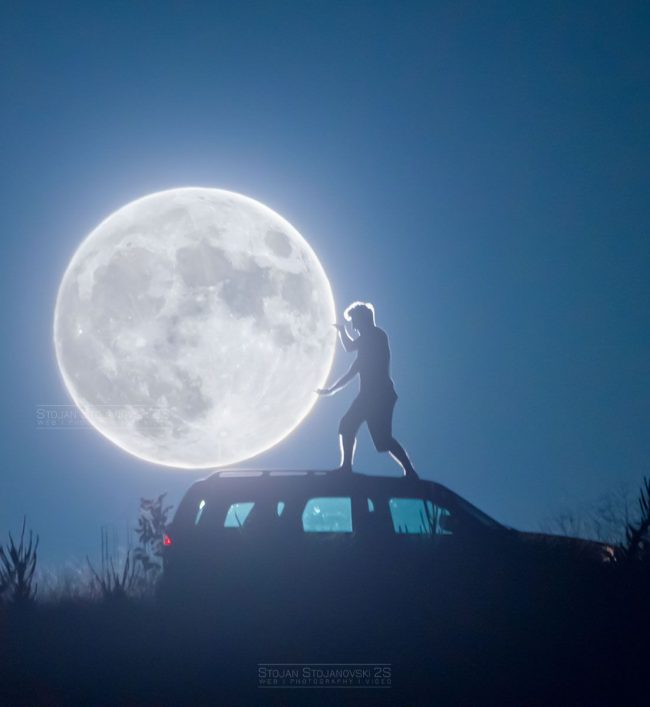
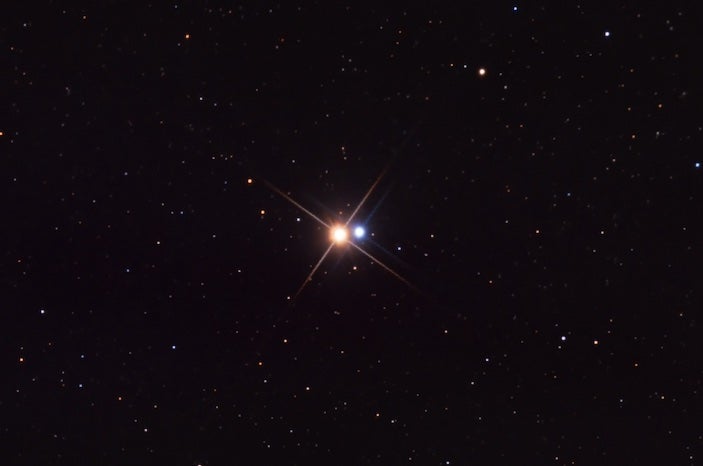


No comments! Be the first commenter?